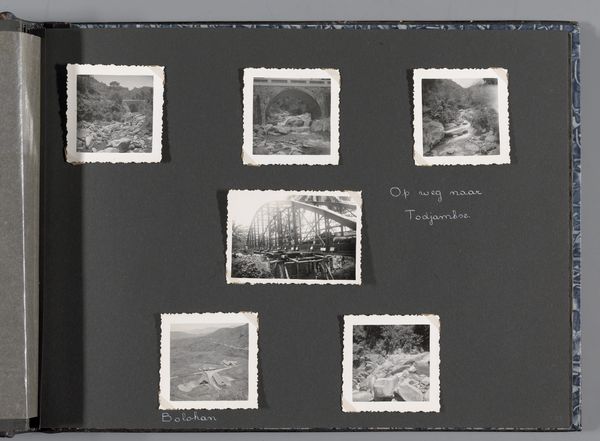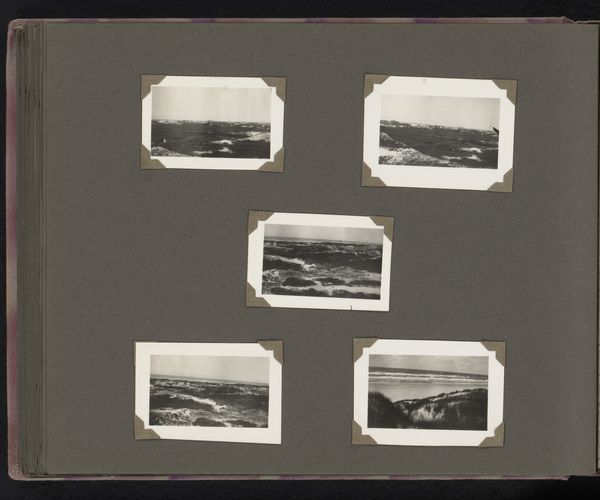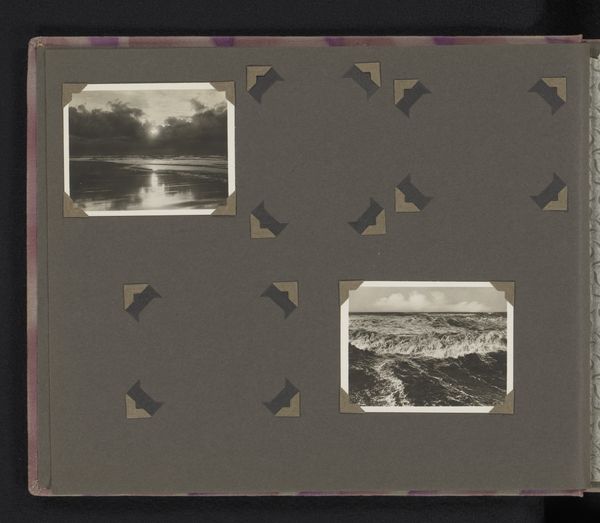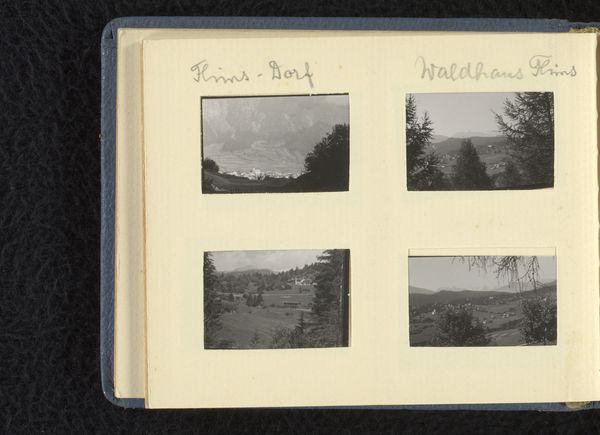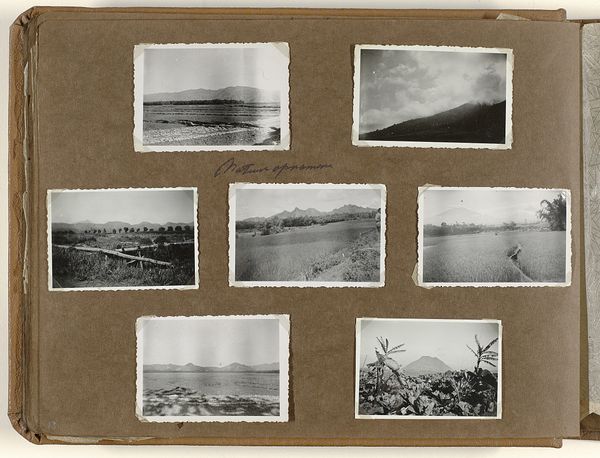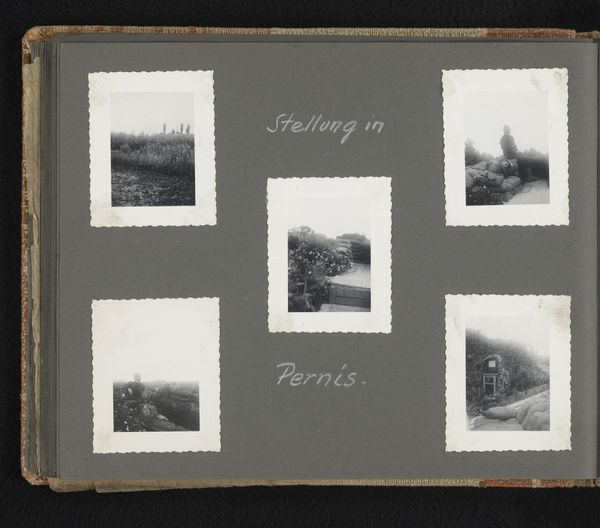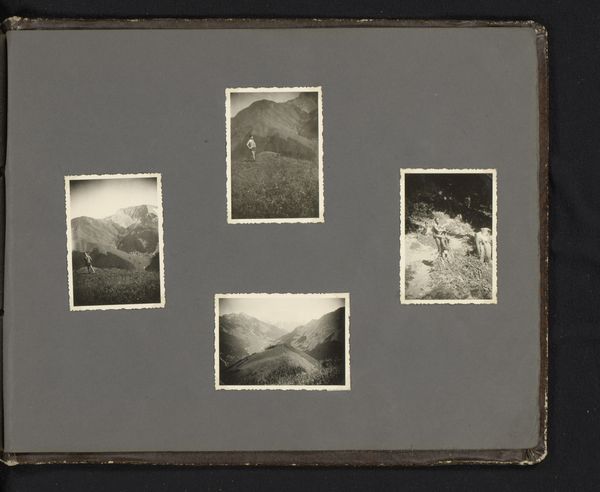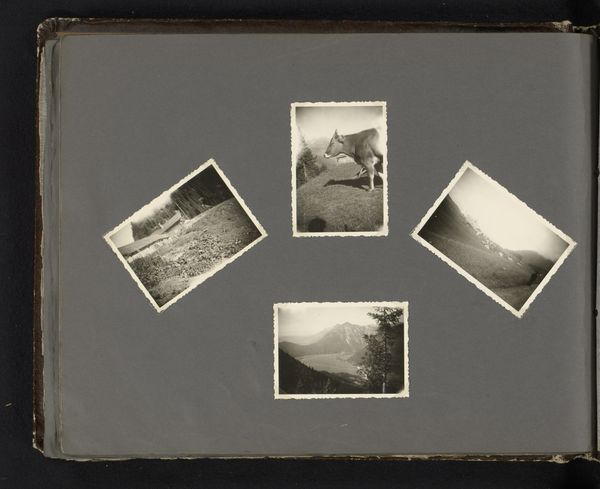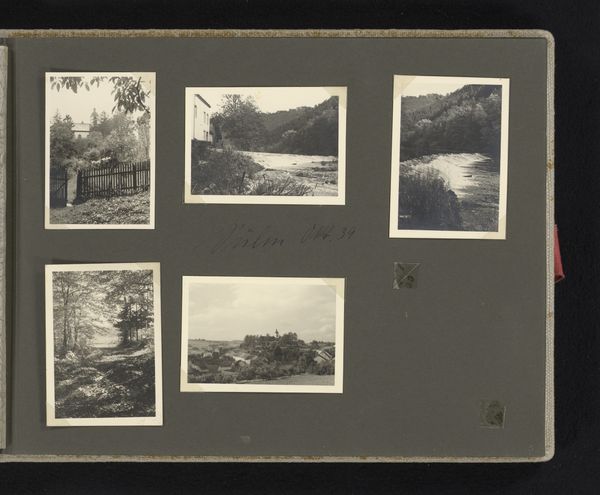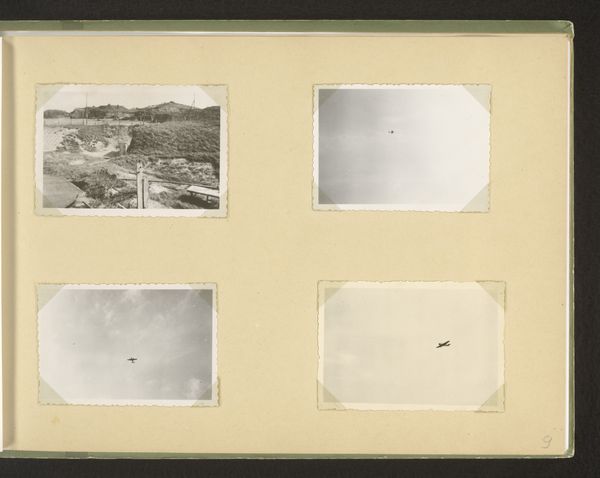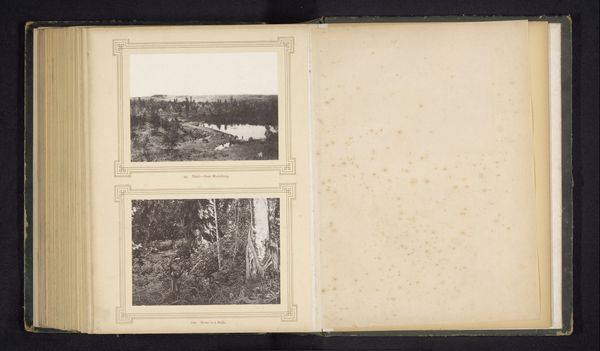
Dimensions: height 60 mm, width 45 mm, height 165 mm, width 235 mm
Copyright: Rijks Museum: Open Domain
Curator: These gelatin-silver prints, collectively titled "Dieren in dierentuin Hagenbeck, juli 1933, Hamburg," offer a glimpse into a German zoo during the interwar period. The photographs are from the Wachenheimer family album, dating probably from between 1933-1937. Editor: They are fascinating. Stark, even. The desaturated tones give everything a haunted, documentary-like quality, reminiscent of German Expressionism in its starkness. There’s an intriguing interplay of textures, between the crisp prints, the album page, and the jagged edges of the photograph frames. Curator: Yes, and if we look beyond the surface aesthetics, the choice to depict animals confined within zoo enclosures presents us with several potent considerations about power and spectatorship. Think about the rise of ethology during that period, a new focus on observing animal behavior, which certainly would have been on display at the Hagenbeck Zoo. The desaturated tones further underscore the artificiality of this staged “nature,” devoid of true vitality. Editor: Interesting that you speak of "staged nature," because from a formal perspective, these works emphasize compositional elements. Note how each picture arranges its elements. Some shots draw a grid, using bars of cages to flatten perspective; in others, rock formations provide dramatic compositional anchors. Semiotically, that evokes specific moods by using high contrast. Curator: Indeed. Also, bear in mind that 1933 was the year Hitler came to power. Considering the Wachenheimer family were Jewish, and eventually fled to the Netherlands, the images evoke profound questions. Are these animals representations of a society facing ever more restricted freedoms? Or, is Hagenbeck Zoo – then as now – merely a display of humanity’s supposed control over nature? The photographic act, even a personal family album, turns into a site for larger social questions. Editor: Right, but let's acknowledge the immediate impression that the work, even separate from political inferences, is one of balanced tonal and visual components. These photographic objects stand by the merits of their form: contrast, shapes, shadow and light; and so they engage in formal conversations independent of any historical readings. Curator: Perhaps that's fair. Although I find it difficult to detach the socio-political from the visual—particularly in these pieces. It serves as a reminder how photography from the period may function as personal records with sharp cultural critiques layered within them. Editor: Yes, but also simply striking visual exercises! Both valid perspectives I believe.
Comments
No comments
Be the first to comment and join the conversation on the ultimate creative platform.
